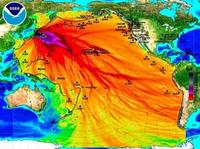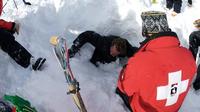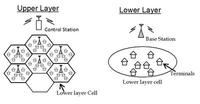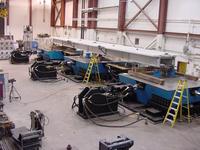-
Planning for future ecological challenges
How can communities dodge future disasters from Mother Nature before she has dealt the blow? Researchers are taking a unique approach to the issue and gaining input and support from community stakeholders. Researchers conducted a series of one-on-one interviews at Big Hole Valley in Montana and Grand County in Colorado to get an array of community contributors thinking and planning for future ecological hazards, and to consider the impact of those decisions.
-
-
Storm surges, rising sea levels threaten New Jersey’s beach-centered tourism industry
Sea level at the Jersey Shore could rise by thirty-one inches by the year 2050, posing a threat to New Jersey’s $38 billion tourism industry. Experts say that the potential for more harsh storms and sea level rise calls for better promotion of what else New Jersey has to offer tourists aside from the beach.
-
-
NERC drill finds U.S. grid preparedness insufficient
The North American Electric Reliability Corporation (NERC) reported that its recent GridEx II exercise has highlighted the fact that nearly all the utilities which took part in the two-day drill last November – a drill aiming to test the preparedness of the U.S. power grid to withstand cyber and physical attacks – admitted that their planning for such attacks was insufficient. NERC’s president, Gerry Cauley, said that protecting utilities against cyber and physical attacks should be considered in the context of measures taken to protect the grid from other threats. He noted that utilities are already hardening their systems against storms like Hurricane Sandy, while working to determine their vulnerability to solar activity that changes the earth’s magnetic field.
-
-
U.S. infrastructure vulnerable to “cascading system failures” caused by weather disasters
Two U.S. government reports released last Thursday warn that U.S. infrastructure is vulnerable to the effects of climate change. One report focuses on energy, the second on infrastructure more generally. The infrastructure-focused report is the first attempt to review climate implications across all sectors and regions. The report analyzes how damage to one infrastructure sector can impact other infrastructure sectors, rather than isolating specific types of infrastructure. The authors warn that climate-fueled weather disasters could cause “cascading system failures” unless changes are adopted to minimize such effects.
-
-
NIST launches effort to improve disaster resilience of communities
The National Institute of Standards and Technology (NIST) will host the first of six workshops devoted to developing a comprehensive, community-based disaster resilience framework, a national initiative carried out under the President’s Climate Action Plan. The workshop will be held on Monday, 7 April 2014.
-
-
Radiation from Fukushima to reach West Coast in April

On the third anniversary of the Fukushima nuclear plant incident, scientists are reporting that low levels of radiation from the Fukushima plant will reach ocean waters along the U.S. West Coast by April 2014. The scientists say that the radiation will be at levels too low to harm humans, but they call for more monitoring, including at the federal level.
-
-
Examining fire safety concerns raised by green buildings
In 2012, the “Fire Safety Challenges of Green Buildings” report assembled a list of seventy-eight green building features and construction elements that could have implications for fire safety. The authors then derived a list of potential hazards associated with the features and elements, including greater flammability, faster burn rate, and increased hindrance to firefighters, as compared with conventional construction. A 3-year project, funded with a $1 million grant from DHS, will enable the further exploration of some of the potential risks and hazards identified in the 2012 report.
-
-
Predicting sliding mountain slopes
If entire mountain slopes start to slide, danger threatens. It is not always easy to predict and monitor these mass movements. In an international project, scientists combined numerical models with microwave radar systems in Northern Tyrol — with promising results. The Steinlehnen slope in Northern Tyrol (Austria) started to move in 2003. Rockfalls threatened people, streets, and buildings. Meanwhile, peace has returned; although the slope is merely “creeping,” Steinlehnen has become an interesting research object for scientists in recent years.
-
-
2011 Oklahoma human-induced earthquake may have triggered larger quake
In a new study, scientists observed that a human-induced magnitude 5.0 earthquake near Prague, Oklahoma in November 2011 may have triggered the larger M5.7 earthquake less than a day later. This research suggests that the M5.7 quake was the largest human-caused earthquake associated with wastewater injection.
-
-
Accelerated urbanization exposes French cities to increased seismic risk
Old structures, designed before current seismic building codes, abound in France, and there is insufficient information about how they will respond during an earthquake. French researchers have looked into data mining to develop a method for extracting information on the vulnerability of cities in regions of moderate risk, creating a proxy for assessing the probable resilience of buildings and infrastructure despite incomplete seismic inventories of buildings. The research exposes significant vulnerability in regions that have experienced an “explosion of urbanization.”
-
-
App helps save people trapped by avalanche

For the person buried under the weight of an avalanche, each minute is precious. A person saved from the snow mass within fifteen minutes has a 90 percent chance of survival. After forty-five minutes that chance has diminished considerably. Researchers develop an app that makes it possible for skiers with smartphones to find people buried in the snow.
-
-
Safeguarding networks when disasters strike

Disasters both natural and human-caused can damage or destroy data and communications networks. Several presentations at the 2014 OFC Conference and Exposition, being held 9-13 March in San Francisco, will present new information on strategies that can mitigate the impacts of these disasters. Researchers created an algorithm that keeps data safe by moving or copying the data from data centers in peril to more secure locations away from the disaster. The algorithm assesses the risks for damage and users’ demands on the network to determine, in real-time, which locations would provide the safest refuge from a disaster. Other researchers suggest that if fiber-optic cables are down, wireless communication can fill the void and be part of a temporary, emergency network. For such a system to work, however, wireless technology would have to be integrated with the fiber-optic network that transports data around the world.
-
-
Large shake tables expands capabilities of U Nevada, Reno’s quake engineering lab

When it opens, the University of Nevada, Reno’s new Earthquake Engineering Laboratoryt will join with the internationally renowned Large-Scale Structures Laboratory to comprise the largest and most versatile structural engineering experimental facility in the United States. Researchers at the facility will conduct research aiming to test new designs and materials that will make buildings, bridges, and highways safer.
-
-
Flood risk in Europe could double by 2050
Losses from extreme floods in Europe could more than double by 2050 because of climate change and socioeconomic development. Floods in the European Union averaged 4.9 billion euros a year from 2000 to 2012. These average losses could increase to 23.5 billion euros by 2050. In addition, large events such as the 2013 European floods are likely to increase in frequency from an average of once every sixteen years to a probability of once every ten years by 2050. Understanding the risk posed by large-scale floods is of growing importance and will be a key for managing climate adaptation.
-
-
What use are apps when your web infrastructure is underwater?
This winter has seen unprecedented high winds and flooding resulting in widespread and in some cases, long-lasting power outages in the United Kingdom, particularly in the west of England. Time and time again, companies have advised their customers to go online to check their Web sites for the latest information. Some organizations have even created apps specifically designed to assist flood victims; others have established Facebook self-help groups. There is a fundamental problem here: There are two primary ways in which we gain access to the Web, via a landline and using a mobile connection. Within our homes the landline connects to a wireless router and also, for a lot of homes, a cordless telephone, both of which need electrical power to work. So, when the lights go out, your router and cordless phones are useless. The result is that at times of crisis, the customers in most need are often the ones with no access.
-
- All
- Regional
- Water
- Biometrics
- Borders/Immig
- Business
- Cybersecurity
- Detection
- Disasters
- Government
- Infrastructure
- International
- Public health
- Public Safety
- Communication interoperabillity
- Emergency services
- Emergency medical services
- Fire
- First response
- IEDs
- Law Enforcement
- Law Enforcement Technology
- Military technology
- Nonlethal weapons
- Nuclear weapons
- Personal protection equipment
- Police
- Notification /alert systems
- Situational awareness
- Weapons systems
- Sci-Tech
- Sector Reports
- Surveillance
- Transportation
Advertising & Marketing: advertise@newswirepubs.com
Editorial: editor@newswirepubs.com
General: info@newswirepubs.com
2010-2011 © News Wire Publications, LLC News Wire Publications, LLC
220 Old Country Road | Suite 200 | Mineola | New York | 11501
Permissions and Policies
Editorial: editor@newswirepubs.com
General: info@newswirepubs.com
2010-2011 © News Wire Publications, LLC News Wire Publications, LLC
220 Old Country Road | Suite 200 | Mineola | New York | 11501
Permissions and Policies
